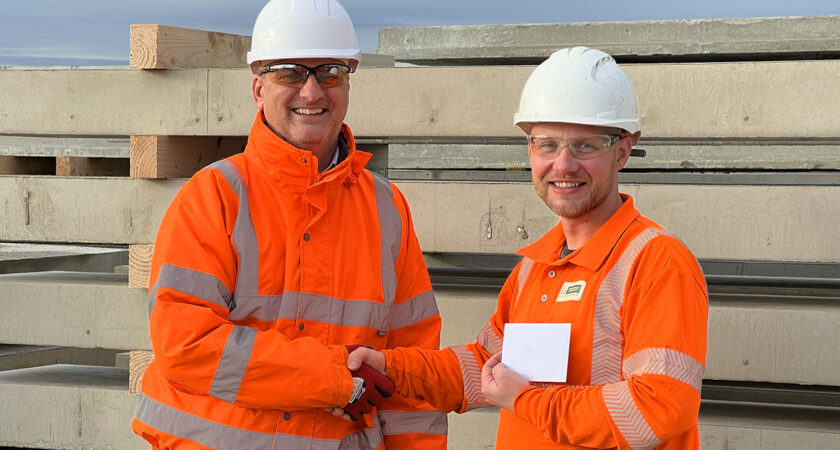Concrete ballast blocks for solar panels
Solar panel farms in the UK are booming. While the rest of the UK was struggling due to the pandemic in 2021, the number of solar panel farms in the country increased by a staggering 12% to 2,510.
Posted on: May 19th 2022 • Posted in: Ballast blocks, Bespoke concrete
Solar panel farms in the UK are booming. While the rest of the UK was struggling due to the pandemic in 2021, the number of solar panel farms in the country increased by a staggering 12% to 2,510. Our total solar capacity is currently 14.6 GW. More and more solar power farms are springing up across the country.
The scale of solar panel farms is growing too, with many projects coming in much larger than previously, in excess of 100 MW, and even 5,000 MW in some cases.
There are several reasons why the number and scale of solar panel farms is growing, even though the incentives that drove growth between 2010 and 2019 have now come to an end.
Individual farmers increasingly find solar farming is an attractive use of their land as it is less volatile than traditional agriculture with unstable crop prices and the end of agricultural subsidies. At a wider level, there is greater and increasing pressure to invest in solar for the purposes of reducing carbon emissions. The number of solar panel farms need to increase rapidly to enable the Government to hit its 2050 net zero target. Add to this, increasing shifts in public opinion, which is now more accepting of solar panel farms as they are quiet and less obtrusive than wind farms, and we can see that there’s a boom underway.
It is likely, with issues like the war in Ukraine affecting oil and gas supplies that even more attention will turn to generating renewable energy within the UK.
That’s a lot of valuable assets sitting in fields
Solar farms offer a safe and renewable way of generating energy. However, while farmers have always been concerned for their assets sat in fields, there’s a notable problem with solar panel farms – the solar panels are the most valuable asset and there are lots of them!
As such, landowners need to secure the solar panels, while allowing flexibility.
Increasingly, those responsible for developing solar panel farms are turning to concrete solar panel ballast blocks to secure their panels, and solve other problems associated with siting solar panels.
Why choose concrete solar panel ballast blocks?
All ground mounted solar panels need support, height from the ground (to allow air flow, cleanliness and maintenance as well as enabling dual land purpose) and security. A solar panel in a solar panel farm is only as good as its foundation.
Concrete blocks have the advantage of allowing the land to remain unchanged, meaning it is an environmentally-friendly solution. Soil mechanics – such as its permeability, slope and stability mean that blocks that sit on the surface are preferable. Bespoke blocks can be manufactured to meet the demands of the particular farm and the individual panels in terms of weight and orientation.
Overall, in many cases, concrete solar panel ballast blocks are favourable over alternative options such as driven piles and are associated with the highest return on investment as the foundation doesn’t fail.
An alternative to using precast concrete ballast blocks is to pour concrete on site. However a precast solution offers many advantages. For example installation time can be greatly reduced when using precast units which have been produced offsite under factory controlled conditions. The installation process becomes a lot less weather dependent, as well as offering health and safety advantages of not having wet concrete and formwork on site. The quality of a precast unit is superior too as the units are cast in steel moulds which can be used again and again, resulting in every ballast block being identical to each other.
Concrete ballast blocks are particularly ideal when it isn’t permitted, sensible or economical to penetrate the ground, for example for archaeological reasons. It is also worth noting that concrete ballast blocks are important when installing solar panel farms on brownfield or contaminated sites as there is no need to disturb the land below. They are also, of course, useful where bedrock makes penetration impossible, costly and damaging.
Bespoke concrete solar panel ballast blocks for solar panel farms
One of the drivers towards relying more on solar panel energy is to reduce our carbon footprint by relying less on fossil fuels. It makes sense therefore to consider the materials used to produce the ballast blocks. We are able to use ultra-low carbon concrete instead of OPC (Ordinary Portland Cement) which can reduce the embodied carbon in the blocks by up to 80%.
Our bespoke team are able produce ballast blocks to any specific size or shape for your own particular project. No need to compromise your requirements by having a one size fits all solution.
If you’re planning a solar farm project contact our bespoke sales team 01449 723150 or email [email protected] to see how we can help.




